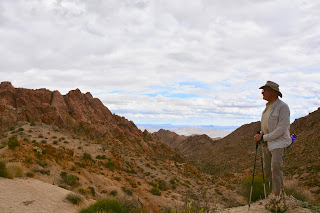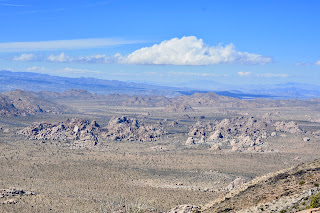Since March 7 we have been exploring Joshua Tree National Park, the eastern half, the Colorado Desert part of the park, while we were staying in Indio and the western half, the Mojave Desert section, from Twenty Nine Palms.
Hike to Mastodon Peak in the Colorado Desert.
The Mastodon trail travels to the Mastodon Mine.
Hike to the Lost Palms Oasis in the Colorado Desert.
View of the Salton Sea from the trail to Forty Nine Palms.
When we moved to Forty Nine Palms, the first hike we took in the Mojave Desert section was up Ryan Mountain.
View from Ryan Peak.
Joshua Trees only grow in the Mojave section of the park.
From Ryan Mountain.
Dave and Wendy from outside Vancouver. They gave us a bottle of water when they noticed that we had foolishly forgotten our water bottles. They are also going to be in Jasper National Park in July, in the same loop, 56, that we will be staying in.
Wendy took this picture of us on top of Ryan Mountain.
Along the Barker Dam trail.
Early cowboys originally built Barker Dam to collect water for cattle.
Just beyond Barker Dam...
where there are some petroglyphs.
We took another trail to the Wall Street Mill.
Forty Nine Palms Oasis behind Frederick.
Lovely Forty Nine Palms Oasis.
The trail to Forty Nine Palms passes by a display of barrel cacti.
Joshua Tree hikes:
Mastodon Peak Loop-
Length - 2.46 miles
Duration - 1 hour, 21 minutes
Elevation - 422 ft (43 floors)
Lost Palms Oasis -
Length - 7.76 miles
Duration - 3 hours, 56 minutes
Elevation - 1,332 feet (134 floors)
Ryan Mountain-
Length - 3 miles
Duration - 1 hour, 51 minutes
Elevation - 1,059 feet (106 floors)
Barker Dam and Wall Street Mill-
Length - 3.79 miles
Duration - 1 hour, 55 minutes
Elevation - 180 feet (18 floors)
Forty Nine Palms Oasis -
Length - 3.37 miles
Duration - 2 hours, 1 minute
Elevation - 784 feet (79 floors)


























